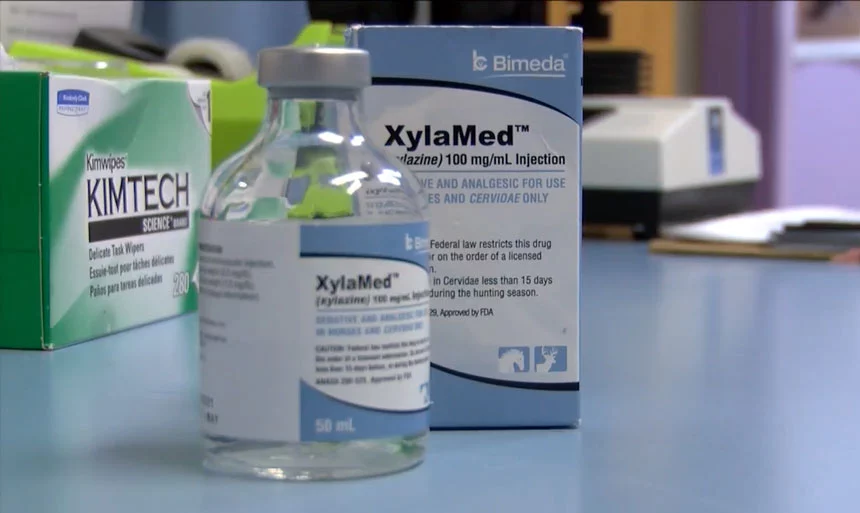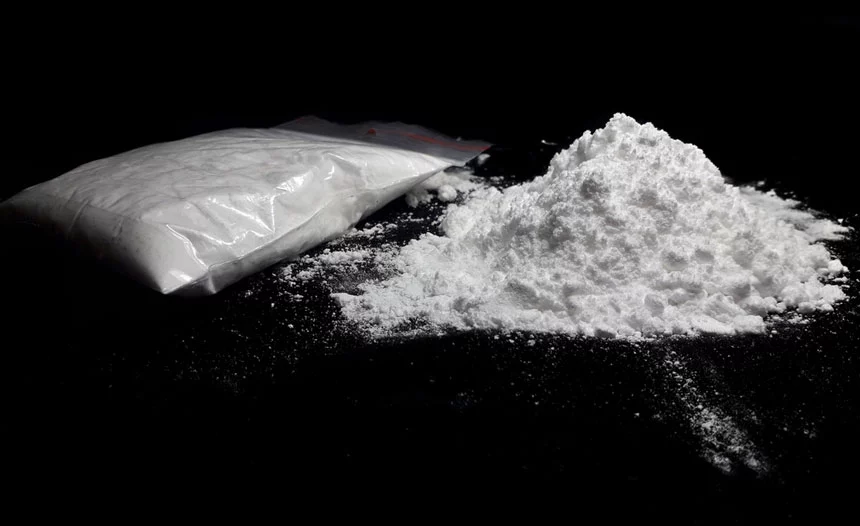Ongoing Challenges for Harm Reduction in the US
Table of Contents
- Ongoing Challenges for Harm Reduction in the US
- What is Xylazine?
- What is Fentanyl?
- What is Heroin?
- What are the Side Effects of Xylazine?
- The Rate of Drug Overdose Deaths Related to Xylazine in the US
- What to Do for a Xylazine Overdose
- How to Avoid Dangerous Substances in the Illicit Drug Supply
- Harm Reduction Techniques for Drug Use
- Other Addiction Treatment Services for Opioid Abuse
- Find Treatment for Opioid Abuse Today!
- Medically Reviewed By
As the addiction crisis continues to wreak havoc across the nation, so too do drug overdose deaths in the country. Recently, the pharmaceutical drug xylazine has become an increasing threat to public health as it has become used as an additive for many drug products.
Keep reading to learn more about xylazine-involved overdoses, and how you prevent yourself and others from falling victim to the harmful effects of this and other illicit drugs.
What is Xylazine?
Xylazine is a non-opioid tranquilizer and muscle relaxant commonly used in veterinary medicine. While it has not been approved for human use, this veterinary tranquilizer has been found to have played a part in an alarming number of overdose deaths throughout the country.
Most studies have found that those who have had exposure to xylazine did so through taking illicit drugs. In particular, those who abused drugs such as heroin and fentanyl.
What is Fentanyl?
Fentanyl is one of the most commonly abused synthetic opioids, as well as one of the most dangerous substances available on the illicit drug market today. It is found to be around 80-100 times stronger than morphine, meaning it can provide significant pain relief.
However, it also poses a serious risk for drug-alcohol abuse, as well as various other severe side effects. In fact, fentanyl, along with other opioids, is currently the leading cause of drug-related deaths reported in the US.
In many cases, drug users may be at risk of fentanyl overdose even with just one pill. Abuse of this drug can cause various health consequences, including:
- Slow, shallow, or strained breathing
- Slow pulse
- Lack of response to external stimuli
- Slurred speech or inability to talk
- Blue-tinted skin, lips, or fingernails
- Limpness in the body
- Nausea or vomiting
- Respiratory depression
- Choking or gagging
What is Heroin?
Heroin is a synthetic opioid that is made from morphine. It can usually be found as a white or brown powder, or in the form of black tar, known as “black-tar heroin.” Like fentanyl, it is extremely addictive and highly dangerous.
The Drug Enforcement Administration (DEA) currently classifies heroin as a Schedule I controlled substance, and has been linked to various deaths in the overdose crisis currently plaguing the nation.
A fatal overdose of heroin will have many warning signs, including:
- Respiratory failure
- Slowed or unsteady breathing
- Small pupils
- Unresponsiveness
- Bluish fingernails and skin
What are the Side Effects of Xylazine?
The increasing presence of xylazine has been detected in a number of drugs, most prominently heroin, fentanyl, and carfentanil. This veterinary sedative has been reportedly used for its ability to lengthen the euphoric effects of other drugs.
Occasionally referred to by the names of “tranq,” or “tranq dope,” xylazine is a central nervous system depressant. For veterinary use, it is designed to help soothe and sedate larger animals, including horses and other cattle.
When used on humans, however, xylazine can cause heavy sedation, drowsiness, and even amnesia. Other side effects of xylazine intoxication include slow breathing, reduced blood pressure (usually to dangerous levels), and a weak pulse.
Long-term abuse of xylazine can also cause skin ulcers for injection drug users, as well as soft tissue infections. Furthermore, taking xylazine alongside other prescription or illicit opioids can significantly increase a person’s risk of experiencing a potentially life-threatening overdose.
The Rate of Drug Overdose Deaths Related to Xylazine in the US
According to the Centers for Disease Control and Prevention (CDC), most overdose deaths that involve xylazine also involve other drugs such as cocaine, alcohol, prescription opioids, and others. Heroin and fentanyl deaths, however, are the most commonly linked to xylazine use.
While research into this topic is still too early to know the effects of xylazine in other locations, the US has seen a significant spread of this issue westwards, with its largest impacts centering in the Northeast.
In 2006, the Philadelphia medical examiner’s office took samples from seven drug-related deaths to detect xylazine use in deceased individuals. In all seven cases, these tests detected xylazine, alongside traces of other drugs.
Furthermore, between 2015 and 2020, there was a 24% increase in the percentage of xylazine-related drug overdose deaths in Pennsylvania. Xylazine was also involved in 19% of all Maryland overdose deaths in 2021, as well as 10% of those which occurred in Connecticut the year before.
What to Do for a Xylazine Overdose
If you or someone you know is experiencing a xylazine overdose or any other form of drug overdose, it is important to take immediate action. With xylazine, it is usually recommended to administer the overdose individual naloxone if available, as this can counteract the effects of opioid overdose.
Unfortunately, because xylazine is not an opioid, some of the side effects of this drug may be not affected by naloxone. This has caused many growing concerns over the effectiveness of naloxone in managing opioid overdose.
The most important thing to do in the event of any kind of overdose is to call for emergency help immediately. Without getting the right medical treatment and support, the side effects of an overdose can quickly become lethal.
How to Avoid Dangerous Substances in the Illicit Drug Supply
If you are purchasing drugs through the illicit drug market, you will be at an automatically increased risk of ingesting other foreign and likely dangerous substances, as well. This is because many drug dealers will mix their products with other dangerous substances, or even replace them completely with a toxic adulterant in order to increase their profit.
With that being said, the best way to avoid being exposed to dangerous chemicals and substances when using illicit drugs is to avoid them altogether. Of course, this is obviously easier said than done.
In order to overcome your habits of substance abuse and avoid putting yourself at risk with unregulated illicit drugs, you will need the support of professional harm reduction and addiction treatment services.
Harm Reduction Techniques for Drug Use
For those who want to lead healthier lifestyles, but are not yet ready or properly equipped to overcome their habits of drug abuse, looking into harm reduction services may be their best option.
Harm reduction techniques follow a recovery model that establishes policies, programs, and practices that are designed to help minimize the harmful effects that often come with drug and alcohol abuse.
Consuming Opioids in Safer Settings
While encouraging those who are struggling with addiction to seek out professional help is important, the harm reduction model takes into consideration that not everyone may necessarily have the means of doing this. In light of this, harm reduction strategies aim to help improve the conditions in which people use dangerous substances.
This is done through the creation of safe spaces as well as providing safe and properly regulated drug paraphernalia in a non-coercive way. While originally met with significant backlash and doubt, these harm-reduction methods have been able to improve public health and safety when it comes to illicit drug use.
Some of the most popular harm reduction services and programs include:
- Syringe access programs provide sterile injection equipment to help minimize the risk of spreading infectious diseases.
- Safer consumption spaces minimize overdose risks by allowing individuals to use certain substances while under the supervision of clinical professionals.
- Training programs for helping individuals learn how to administer naloxone and distribute this medication to at-risk communities.
Other Addiction Treatment Services for Opioid Abuse
For those who are ready to begin their recovery journey, there are several addiction treatment programs available to help them overcome their opioid abuse. These may offer a wide variety of services and programs designed to help treat both their addiction, as well as its underlying causes.
Most professional substance abuse treatment services today follow a “Continuum of Care” model featuring 7 levels of care in their approach to recovery. For those who have participated in the harm reduction model and find that they are ready to seek professional help, they may be referred by their provider to a rehab program that can offer them this support.
For those who regularly abuse drugs and have become physically dependent on these substances, overcoming this substance use may cause them to develop severe, and potentially fatal withdrawal symptoms.
If this occurs, these individuals will be advised to undergo a medical detox process, in which they will be gradually weaned off an abused substance while under constant clinical supervision. This will help minimize their risk of developing symptoms of withdrawal.
The addiction treatment process may also involve participation in inpatient treatment programs, outpatient rehab, and medication management services. For those who are struggling with co-occurring substance use and mental health disorders, dual-diagnosis treatment options may be their best tool for achieving and maintaining sobriety.
Ultimately, what level of care you will choose to seek out will be up to you. If you are not sure what treatment options will be best for your recovery needs, talking to your healthcare provider or an addiction recovery specialist can help you decide.
Find Treatment for Opioid Abuse Today!
The threat of xylazine and opioid overdose is only continuing to spread, putting people who use drugs at an increased risk of overdose and other adverse side effects. If you or a loved one is struggling with opioid abuse and addiction, help is available to get you started on the path to recovery.
The Find Addiction Rehabs recovery team understands how hard it can be to stop using and start leading a healthier lifestyle. But you don’t have to do it alone; our hotline is available 24 hours a day, seven days a week to provide you with the recovery tools and resources you need to get started on your path to sobriety.
Our representatives are available at all times of the day or night to answer all of your treatment questions and provide you with recovery tools and resources. Whether connecting you with an addiction rehab center in your area or discussing your payment options, we are here to help.
So make the right choice and call now, so that we can help you take the first step on your path to sobriety, where you can learn how to live a happier, healthier, and substance-free life!
Nicole Rogers is an experienced and accomplished writer with special interests in the fields of Anthropology, English, and behavioral health, and has written countless articles for newspaper publications, institutional research journals, and Find Addiction Rehabs.
Her alma mater is Florida Atlantic University in Boca Raton. Nicole hopes to spread awareness of and combat the stigmatization surrounding addiction and substance abuse treatment through her writing and work in the field.





